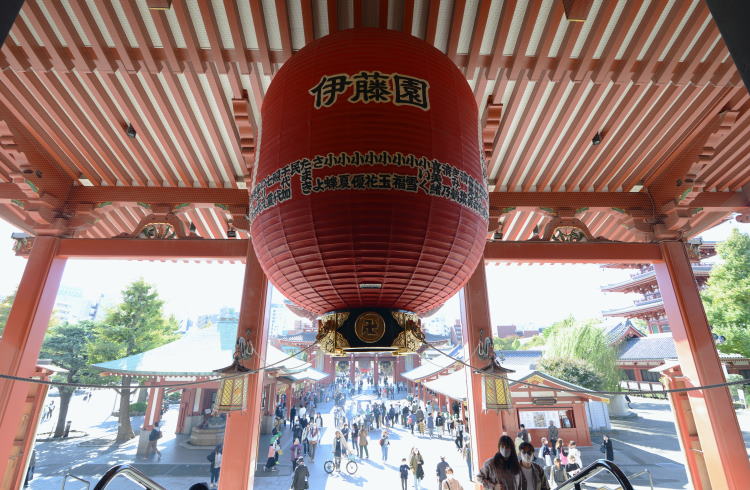Driving in Japan: Essential Road Safety Tips
Is it safe to drive in Japan? Find out how to get around safely, and what driving license you require in Japan.
 Photo © Getty Images/Taro Hama @ e-kamakura
Photo © Getty Images/Taro Hama @ e-kamakura
- Can you use your driver's license in Japan?
- Japan's road rules
- Japanese street signs
- What side of the road does Japan drive on?
Some countries are renowned for driving holidays, such as the US and Australia, two vast countries with impressive road networks. Whereas Japan is an overlooked destination for self-driving trips. Perhaps that’s because, compared to the US and Australia, Japan is far more compact and also has a greatly superior train system.
Behind China, Japan has the world’s second-longest high-speed rail network, at about 2,900km. Called the Shinkansen, this bullet train system has been world-famous since 1964, and riding it is a fantastic travel experience. Regardless, driving in Japan is easy, safe and rewarding for travelers.
Can you use your driver's license in Japan?
While many countries accept a US, Canadian, Australian or European driver’s license, that is not the case in Japan. It requires all motorists to either possess a valid Japanese driver’s license or, in the case of tourists, to have both a valid license from their home country and an International Driver’s Permit (IDP).
I’ve had an IDP for years. Even though I’ve never been asked to produce it, I felt safe knowing I had a secondary form of ID to my Australian license while I was driving in Europe, Thailand, and the US. Bear in mind, that you cannot get an IDP while you’re in Japan, it must be secured back in your home country.
Lastly, if your driver’s license is in any language other than English, Japan requires you to provide an English-language translation of that license, notarized by a government department in your home country. This is tricky. So, in this case, you may be better off sticking to the bullet trains.
Japan's road rules
Don’t assume you can drive on Japan’s roads in the same manner as you do back home. To avoid being penalized by Japanese traffic police, or, even worse, causing a crash, you need to study Japan’s road rules first. You should visit the English language website of the Japan Auto Federation to get a deep understanding.
But, first, here are a few basic rules. You must be 18 years old to legally drive in Japan. Japan’s most common speed limits are 40 km in heavily built-up areas, 60 km on suburban roads, and up to 100 km on expressways. On the majority of Japan’s roads, pedestrians have the right of way, so drivers must yield for them.
Seatbelts are mandatory, and cell phone use is prohibited while driving. When using expressways, meanwhile, motorists should only use the right-hand lanes for overtaking. And, when a traffic light is red, you cannot turn through that intersection, unlike in the US, for example.
Planning a trip to Japan? Find out how travel insurance can cover adventure activities, lost or stolen baggage, medical emergencies and more.
Japanese street signs
It might seem obvious, but Japan is not an English-speaking nation so don’t expect all road signs to be in English. Importantly, stop signs are written in Japanese characters and are a totally different shape from what you might be used to at home. Whereas in most of the Western world, stop signs are octagonal, in Japan, while they are red, they are an upside-down triangle. Familiarize yourself with the Japanese stop sign before you drive here.
The upside of Japan’s road signs is that they are usually pictorial and so are quite self-explanatory. So, too, are Japanese traffic lights, which are red, gold and green, indicating stop, slow down, or proceed just as you’re likely used to back home.
What side of the road does Japan drive on?
In Japan, you must drive on the left, which will be a strange experience for tourists from the dozens of right-side driving countries, including the US, Canada and most European nations. Trust me, driving on the opposite side of the road is much more difficult than it may seem.
Here are a few tips for making this transition smoother. Firstly, to get around in Japan, use the GPS on your phone and turn up its volume so you can listen to the directions while keeping your eyes glued to these unfamiliar roads. Secondly, consider spending a day or two acclimatizing to Japan as a pedestrian before you begin driving.
Thirdly, and most importantly, practice. When you pick up your hire car, don’t head straight for a Japanese expressway or a section of busy city streets. Ask the hire company to recommend a network of nearby streets that are quiet, and head there to practice staying left.
Lastly, looking right is as important as staying left. What that means is, when you are turning onto a road, as a regular right-side driver your instinct will be to look left for any approaching traffic. But in Japan, you must look to the right to see if the coast is clear. Makes sense? Good. Now drive carefully and enjoy Japan.
Related articles
Simple and flexible travel insurance
You can buy at home or while traveling, and claim online from anywhere in the world. With 150+ adventure activities covered and 24/7 emergency assistance.
Get a quote


No Comments